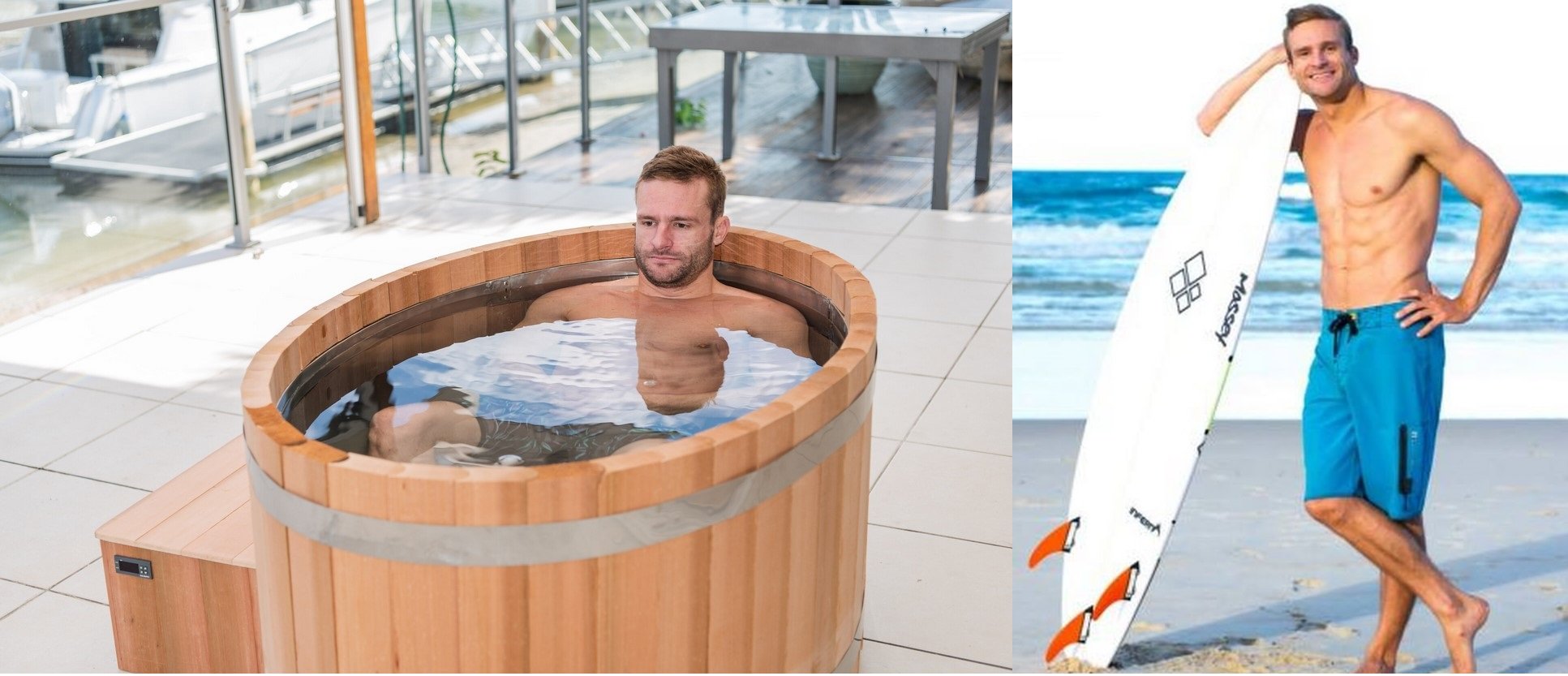For centuries, people in northern European countries have bathed in rivers and lakes in wintertime as a way to increase strength and vitality.
Exposing your body to the rigor of enduring intense cold — especially that brought on by cold water, is now a well-established personal therapeutic strategy. It’s been shown to increase mitochondrial biogenesis, help with weight loss by converting fat tissues into the leaner and meaner brown fat tissues, and increase production of the hormone norepinephrine by as much as 530%.
But ice bathing has a special place in the routine of Jonathan “Jono” James of Gold Coast, Australia. The 34-year-old nutrition therapist is the image of an Aussie fitness and health coach—a tall beautiful man with a blinding white smile, six-pack abs, and broad shoulders.
But at age 6, he was diagnosed with cystic fibrosis, a condition so serious that his doctors told his parents “not to get too attached” and that he probably wouldn’t live beyond 10 years of age.
Cystic fibrosis is an incurable condition manifesting in an individual’s inability to produce mucus and other secretions of the correct density. They’re too thick, and this results in frequent lung infections, and the inability to break down food. These spawn a myriad of offshoot problems including poor digestion and thus malnutrition, but also diabetes, and the problems with repeat bacterial infections.
“Don’t get too attached, and also don’t try anything alternative because it’s not going to work,” says James, paraphrasing his doctors’ advice all those years ago. “The thing with doctors is they’re very knowledgeable about certain areas and if there’s anything outside their box they just kind of assume it’s witchcraft”.
By age fourteen, thanks to the care of a super attentive pair of parents, Jono was aware enough to begin building a foundation of nutrition, exercise, and lifestyle choices that has so far bought him nearly two decades of additional life.
“The analogy I use is I treat myself like an Olympic athlete… I have to have everything perfectly aligned, but instead of fighting for a gold medal I’m fighting to keep my life,” he said. “I’ve kind of lived 5 years at a time. I’ve known that the next five years could be my last, so it’s an incredible burn on me and something I’ve had to shoulder my whole adult life”.
James’ story of recovery is very inspiring, and ice baths have a special place in it for several reasons.
PICTURED ABOVE: “Jono” James uses his own cold plunges to keep his cystic fibrosis in check.
If you think the stories you’ve just read were worth a few dollars, consider donating here to our modest $500-a-year administration costs.




